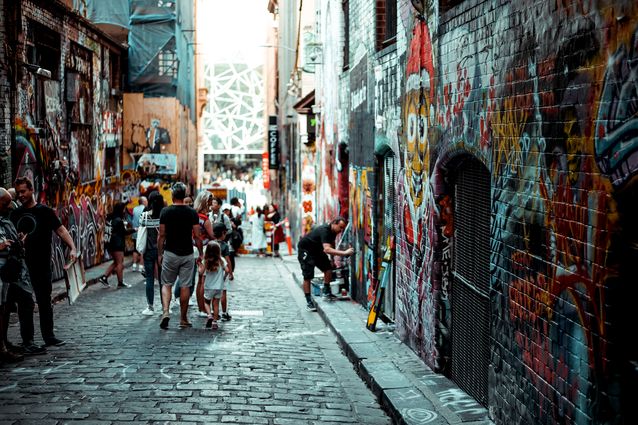[ad_1]
The City of Melbourne has released a new set of safeguards that will protect the city’s historic laneways against “inappropriate” future development.
The new policy involves changes to planning controls, introducing tougher regulations and stricter setback requirements that will prevent bulky developments and preserve the laneways’ heritage materiality.
Melbourne’s matrix of laneways is an important part of the city’s identity for its bluestone cobbles, dining venues and abundance of street art.
Acting Lord Mayor Nicholas Reece said that many of Melbourne’s laneways have already been seriously degraded due to a lack of substantive heritage protection. “Heritage laneways are a much-loved part of the fabric of Melbourne and something that is really unique and distinctive about our city,” the Acting Lord Mayor said.
“These measures will stop inappropriate, low-quality development in all our laneways – with our update helping to ensure developers know exactly what is expected.”
The new policy will replace the previous City Of Melbourne planning rules that were deemed below community satisfaction. Advocacy group Melbourne Heritage Action had previous noted that laneways have been historically dismissed under heritage protection efforts.
The changes will deliver improvements in the types of development applications submitted to council and force future developments to work within the existing fabric of the sites.
Heritage portfolio lead councillor Rohan Leppert said that far from inhibiting future development, “these planning controls and policies are seeing more heritage fabric retained in new development, boosting creative and high-quality architecture responses, keeping Melbourne’s famed streets and laneways interesting and inviting.”
The new policy updates cite hospitality venue “Her” as a benchmark for historically sympathetic redevelopments, as a restoration of 270 Lonsdale Street that highlighted the unique character of the heritage architecture and helped to revive the energy of Drewery Lane.
The Acting Lord Mayor concluded that Melbourne should be a city of “design excellence”, and prioritizing and preserving architectural history was a vital part of that.
Related topics
[ad_2]
Source link











